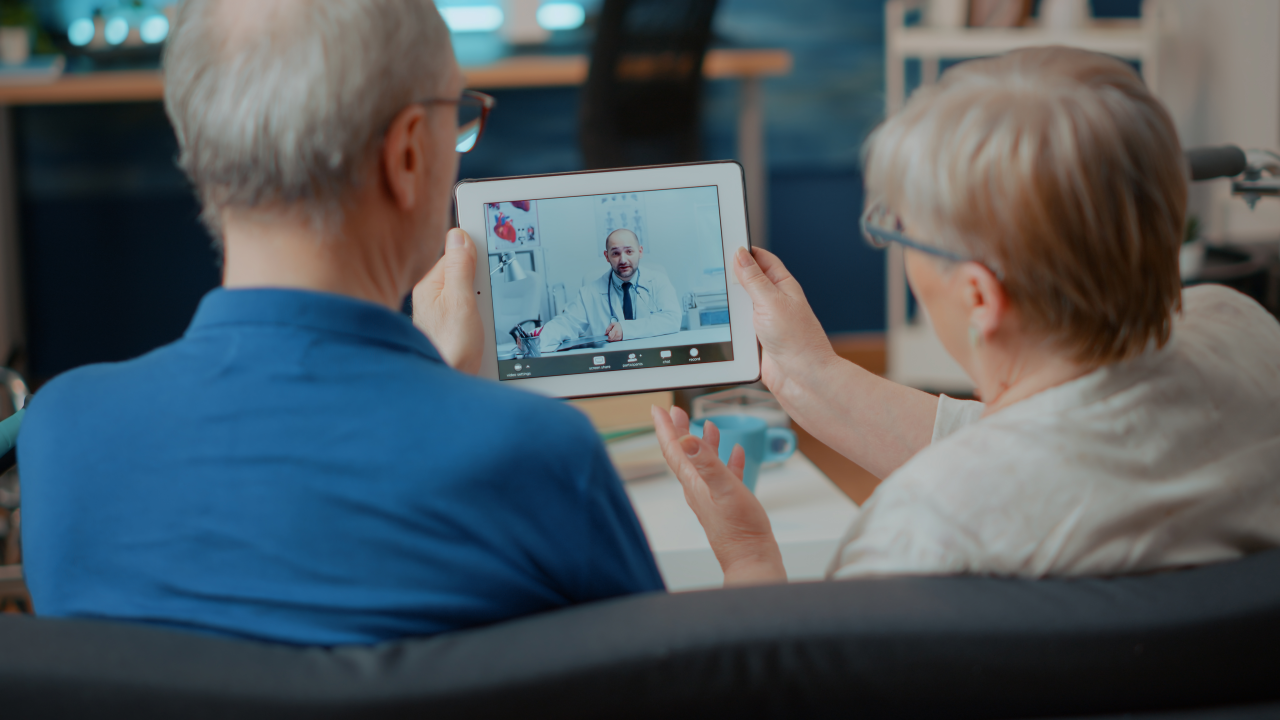Paradigms are useful tools in our modern lives. They help us to make sense of the world around us much more easily. Often, paradigms represent the tried and true — the things that worked well in the past. But more often than not, they are based on assumptions — until more knowledge becomes available.
There are business paradigms (sell a gadget for more than it cost you to make) or scientific paradigms (germs vs. miasma (“bad air”)). There are also plenty of paradigms in healthcare around diagnosis (e.g., lab tests and imaging) and treatment (one size fits all medications for anyone with that diagnosis).
One healthcare paradigm we’ll be taking a closer look at today is the paradigm around care delivery.
A brief history of Care Delivery
For thousands of years humans lived in close proximity to each other and when sick care was needed, the sick were brought a short distance to the local shaman, medicine man, or doctor.
But since transportation was often difficult, especially for the ill, many times the medical experts would travel to the patients, rather than the other way around.
My introduction to healthcare started at the Mayo Clinic and there are plenty of old photos of Dr. W. W. Mayo riding a buggy to the countryside to call on his patients in their homes: the good old house calls.
Even in Germany in the 1970s, my pediatrician would stop by our home at the end of his day to make sure that I was doing alright as I fell ill with a common childhood disease.
With the modernization and “taylorization” of healthcare, but also with the notion that healthcare should be available to all and not just those who could afford it, house calls became more and more a rarity. Especially in the US patients were increasingly expected to seek care at clinics and could no longer expect house calls by their physician.
For many patients, this turned a 10 minute doctor visit into at least a 90 minute ordeal of travel time, finding parking, checking in and spending time in the waiting room as many doctors are inevitably behind schedule, given the nature of their unpredictable job.
On the other hand, we are also no longer “wasting” the physician’s valuable time on traveling from patient to patient, so productivity in a given day could be much higher.
A Virtual First Mindset
But just like the old paradigm of making housecalls was gradually replaced with a “you have to come to me to be seen” paradigm, we are now seeing, thanks to the advancements in technology that gave us highly effective telehealth, a strong shift towards “virtual first”.



Since the onset of Covid, we have actually undergone multiple care delivery paradigm shifts in rapid succession: From “In-Person Only” prior to the pandemic to “Virtual Only” during the lockdown. Then from “Virtual Only” to “In-Person first; virtual if you insist”.
And now many key players in healthcare are pushing a “virtual first, in-person if needed” care model. I’ll just name a few:
Amazon Care piloted its employee clinic with a virtual first approach and is now rolling out these services to all of its employees. It also plans to offer the service to other employers.
A growing number of health insurers are now offering “virtual first” health plans to employers, with savings of 10%-30%.
UnitedHealth and Optum have also designed their own “virtual first” health plan, called NavigateNOW, where they promise a seamless hand-off from virtual to in-person care if that should become necessary.
Since a vast number of ailments can easily and reliably be diagnosed and treated virtually (especially when augmented by lab tests and imaging tests), I expect the savings to be even higher – especially since patients may no longer undergo some “default tests” that are typically administered “while you are here” (e.g., X-Rays and injections with orthopedic injuries).
Implications for Traditional Care Providers
Of course it is much easier for health plans such as United or Amazon Care’s “blank canvas design” approach to avoid or minimize in-person visits. Not only do they not have the legacy brick-and-mortar infrastructure of traditional health care providers, they also are not impacted by capacity problems for in-person healthcare, often with wait times that are days or weeks out. Presumably, given the great flexibility of a telemedicine physician with regards to shifts and living location, it is also much easier to recruit.
But as with any progress, we cannot lament the fact that these players are trying to innovate and in the process lowering the cost of care and meeting the needs of the busy modern healthcare consumer that wants convenience above all, with taking care of one’s health being just one more modern life aspect to take care of.
So should you — a health system, a health center, a behavioral health clinic — embrace a virtual first model? Ultimately, I’d say yes, though it may take a few years for the population you are serving to consistently demand a virtual first approach. But it will also take your clinicians and allied health staff to embrace virtual care to its fullest extent.
The best approach lies first of all in fully embracing virtual care by declaring a sound telehealth strategy. Next, optimize your in-person and telehealth workflows for a hybrid-care environment, and adopt a 100% virtual care mindset that delivers care virtually when (1) it is clinically appropriate, (2) the patient wants it, and (3) the patient has the digital literacy and technical capabilities.
With that approach you are on your way towards breaking the outdated care delivery paradigm of “if you want care, you have to come to us.” Because that paradigm will no longer serve you well in the not-so-distant future.
Do you want to talk about breaking your organization’s paradigm? Connect with Christian to schedule a brief chat.








To receive articles like these in your Inbox every week, you can subscribe to Christian’s Telehealth Tuesday Newsletter.
Christian Milaster and his team optimize Telehealth Services for health systems and physician practices. Christian is the Founder and President of Ingenium Digital Health Advisors where he and his expert consortium partner with healthcare leaders to enable the delivery of extraordinary care.
Contact Christian by phone or text at 657-464-3648, via email, or video chat.







Leave A Comment